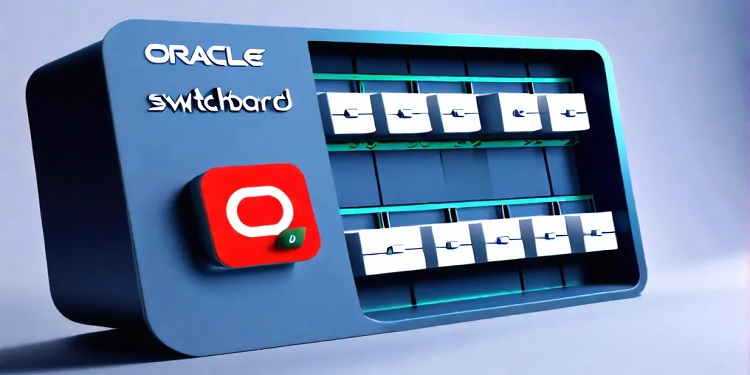DeFi
Qu’est-ce que le jalonnement non dépositaire et pourquoi est-ce important pour la finance décentralisée ?

Le jalonnement est un processus crucial dans de nombreux réseaux blockchain qui permet de sécuriser les transactions et de maintenir la santé globale du système.
Dans les modèles de jalonnement traditionnels, les utilisateurs confient leurs actifs à un dépositaire tiers, qui gère le processus de jalonnement en leur nom. Cette approche, connue sous le nom de jalonnement custodial, est la norme depuis un certain temps. Cependant, une nouvelle approche appelée jalonnement non dépositaire gagne du terrain dans l’écosystème de la finance décentralisée (DeFi), offrant aux utilisateurs plus de contrôle, de sécurité et de transparence. Le jalonnement non dépositaire représente un changement de paradigme dans la façon dont les utilisateurs interagissent avec les réseaux blockchain et participent aux processus de validation et de sécurité, s’alignant sur les principes fondamentaux de décentralisation et d’autosouveraineté qui sous-tendent l’écosystème DeFi.
Qu’est-ce que le jalonnement ?
Le staking consiste à engager ou à « verrouiller » une partie de ses avoirs en cryptomonnaies pour participer à la validation et à la confirmation des transactions sur un réseau blockchain. Ce faisant, les acteurs jouent un rôle crucial dans le maintien de la sécurité et de l’intégrité du réseau. En échange de leurs contributions, les parieurs reçoivent des récompenses sous la forme de jetons nouvellement émis ou de frais de transaction. Ce mécanisme d’incitation est un élément clé de nombreux algorithmes de consensus de preuve de participation (PoS), conçus pour être plus économes en énergie et plus respectueux de l’environnement que les systèmes de preuve de travail (PoW) comme Bitcoin. Les algorithmes PoS s’appuient sur des jalonneurs pour valider les transactions et créer de nouveaux blocs, plutôt que de s’appuyer sur des processus miniers énergivores. En tant que tel, le jalonnement est devenu un élément essentiel de nombreux réseaux blockchain, permettant aux utilisateurs de participer aux opérations du réseau tout en gagnant des récompenses pour leurs contributions.
Jalonnement dépositaire ou non dépositaire
Dans le cadre du jalonnement, les utilisateurs transfèrent leurs actifs vers une plateforme ou une bourse tierce, qui gère ensuite le processus de jalonnement en leur nom. Cette approche est pratique, car les utilisateurs n’ont pas à se soucier des aspects techniques du jalonnement. Cependant, cela comporte également des risques importants. En cédant le contrôle de leurs actifs à un dépositaire, les utilisateurs s’exposent à une perte potentielle de leurs fonds en raison du piratage de la plateforme, d’une mauvaise gestion ou d’autres failles de sécurité. De plus, le jalonnement manque souvent de transparence, car les utilisateurs ont une visibilité limitée sur les processus de jalonnement et la gestion de leurs actifs.
Jalonnement non dépositaire, d’autre part, permet aux utilisateurs de participer au jalonnement sans renoncer au contrôle de leurs clés privées ou de leurs actifs. Au lieu de s’appuyer sur un dépositaire tiers, les utilisateurs interagissent directement avec les protocoles décentralisés et les contrats intelligents déployés sur les réseaux blockchain. Cette approche garantit que les utilisateurs conservent la pleine propriété et l’autonomie de leurs avoirs tout au long du processus de jalonnement. En gardant le contrôle de leurs clés privées, les utilisateurs réduisent considérablement le risque de perdre leurs actifs en raison de piratages ou d’une mauvaise gestion de la plateforme. En outre, le jalonnement non dépositaire promeut les principes fondamentaux de décentralisation et d’auto-conservation, en s’alignant sur la philosophie de la technologie blockchain et de l’écosystème DeFi.
Comment fonctionne le jalonnement non dépositaire
Le jalonnement non dépositaire implique une interaction avec des protocoles décentralisés et des contrats intelligents déployés sur des réseaux blockchain comme Ethereum. Ces protocoles sont conçus pour faciliter les processus de jalonnement de manière décentralisée et sans confiance, sans avoir besoin d’un intermédiaire centralisé. Les utilisateurs connectent à ces protocoles leurs portefeuilles non dépositaires, qui leur permettent de gérer leurs clés privées et leurs actifs numériques. Une fois connectés, les utilisateurs peuvent déléguer leurs participations à des nœuds de validation ou à des pools de liquidité sans transférer la propriété des actifs.
Le processus de jalonnement est régi par un code transparent et open source, garantissant que les utilisateurs peuvent vérifier et auditer les mécanismes sous-jacents. Ce niveau de transparence est un avantage clé du jalonnement non dépositaire, car il favorise la confiance et la responsabilité au sein de l’écosystème. En interagissant directement avec ces protocoles décentralisés, les utilisateurs peuvent participer au staking tout en gardant un contrôle total sur leurs actifs.
Pour démarrer le jalonnement non dépositaire, les utilisateurs suivent généralement ces étapes :
1. Choisissez une plate-forme ou un protocole de jalonnement non dépositaire qui prend en charge le réseau de crypto-monnaie ou de blockchain souhaité.
2. Connectez un portefeuille non dépositaire compatible à la plateforme ou au protocole choisi.
3. Sélectionnez l’actif et le montant à miser, en fonction des exigences de la plateforme et des avoirs de l’utilisateur.
4. Déléguez la mise à un nœud de validation ou à un pool de liquidité, en suivant les instructions spécifiques de la plateforme.
Tout au long de ce processus, les utilisateurs conservent un contrôle total sur leurs clés privées et leurs actifs, garantissant ainsi qu’ils peuvent gérer leurs enjeux et récompenses sans dépendre d’un dépositaire tiers.
Flexibilité et contrôle
Un autre avantage important du jalonnement non dépositaire est la flexibilité et le contrôle qu’il offre aux utilisateurs. Contrairement aux modèles de jalonnement non dépositaire, dans lesquels les utilisateurs peuvent être confrontés à des restrictions ou à des retards pour accéder à leurs fonds, le jalonnement non dépositaire permet aux utilisateurs de retirer ou de transférer leurs actifs mis en jeu à tout moment, sous réserve des conditions spécifiques du protocole.
Ce niveau de contrôle et de flexibilité est particulièrement important dans l’écosystème DeFi dynamique et en évolution rapide, où les utilisateurs peuvent avoir besoin de réagir rapidement aux conditions du marché ou de profiter de nouvelles opportunités. En conservant un contrôle total sur leurs actifs, les utilisateurs peuvent prendre des décisions éclairées et adapter leurs stratégies selon leurs besoins sans être contraints par les limites des plateformes de jalonnement.
Potentiel d’erreur de l’utilisateur
Bien que le jalonnement non dépositaire donne aux utilisateurs un plus grand contrôle sur leurs actifs, il introduit également un risque d’erreur de l’utilisateur. Des erreurs dans la signature des transactions, la perte de clés privées ou les interactions avec des contrats intelligents malveillants peuvent entraîner la perte d’actifs mis en jeu.
Les utilisateurs doivent faire preuve de prudence et suivre les meilleures pratiques pour sécuriser la gestion des clés et la vérification des transactions. Cela inclut l’utilisation de portefeuilles matériels, l’activation de l’authentification multifacteur, ainsi qu’un examen et une compréhension approfondis des protocoles et des contrats intelligents avec lesquels ils interagissent.
Risques de marché et réglementaires
Comme tout investissement en crypto-monnaie, le jalonnement non dépositaire est soumis à la volatilité du marché et aux fluctuations de la valeur des actifs. La valeur des actifs mis en jeu peut fluctuer considérablement, ce qui a un impact sur les récompenses et les rendements potentiels pour les investisseurs.
De plus, le paysage réglementaire entourant les crypto-monnaies et DeFi continue d’évoluer, introduisant des incertitudes et des risques potentiels. Les changements dans les réglementations ou les cadres juridiques pourraient avoir un impact sur les opérations des protocoles de jalonnement non dépositaires ou sur l’écosystème DeFi plus large.
Les utilisateurs doivent rester informés des conditions du marché et des évolutions réglementaires, et examiner attentivement les risques associés avant de s’engager dans des activités de jalonnement non dépositaires.
Pourquoi le jalonnement non dépositaire est important pour DeFi
Le jalonnement non dépositaire joue un rôle crucial dans la promotion des principes fondamentaux de décentralisation et d’autonomisation des utilisateurs qui sous-tendent l’écosystème DeFi. En réduisant le recours aux entités centralisées et aux dépositaires, le jalonnement non dépositaire améliore la résilience et la décentralisation des réseaux blockchain.
Dans le système financier traditionnel, les particuliers s’appuient souvent sur des intermédiaires et des institutions centralisées pour gérer leurs actifs et faciliter les transactions financières. Cette centralisation du pouvoir et du contrôle a conduit à des problèmes tels que le manque de transparence, des frais élevés et un accès limité aux services financiers pour de nombreux individus et communautés.
L’écosystème DeFi vise à relever ces défis en créant un système financier plus ouvert, transparent et inclusif construit sur des technologies décentralisées comme la blockchain. Le jalonnement non dépositaire joue un rôle crucial dans cette vision en permettant aux utilisateurs de prendre le contrôle de leurs actifs financiers et de participer aux processus de validation et de sécurité des réseaux blockchain sans recourir à des intermédiaires.
Favorise la décentralisation
En réduisant le recours aux entités centralisées et aux dépositaires, le jalonnement non dépositaire améliore la résilience et la décentralisation des réseaux blockchain. Lorsque les utilisateurs mettent leurs actifs en jeu via des protocoles non dépositaires, ils contribuent à la décentralisation des processus de validation et de consensus du réseau, le rendant plus résistant à la censure, à la manipulation ou aux points de défaillance uniques.
Cette décentralisation est un principe fondamental de l’écosystème DeFi, car elle vise à créer un système financier plus équitable et inclusif qui n’est pas contrôlé par une seule entité ou un groupe d’entités.
Encourage l’innovation
La nature ouverte et sans autorisation des protocoles de jalonnement non dépositaires favorise l’innovation et le développement de nouvelles applications et services DeFi. Les développeurs peuvent s’appuyer sur ces protocoles, créer de nouveaux produits financiers et étendre l’écosystème DeFi.
En permettant aux utilisateurs de participer au jalonnement et de gagner des récompenses sans dépendre d’intermédiaires centralisés, les protocoles de jalonnement non dépositaires créent de nouvelles opportunités pour les individus de générer des revenus passifs et de participer à la croissance de l’écosystème DeFi.
De plus, la transparence et le manque de confiance des protocoles de jalonnement non dépositaire encouragent l’expérimentation et l’innovation, car les développeurs peuvent s’appuyer sur ces systèmes ouverts et vérifiables, favorisant ainsi la création de nouveaux instruments et services financiers qui répondent mieux aux besoins des utilisateurs.
Tendances et prévisions futures
À mesure que l’espace DeFi continue d’évoluer, le jalonnement non dépositaire devrait gagner encore plus de popularité et d’adoption :
– Intégration croissante avec des écosystèmes DeFi plus larges : les protocoles de jalonnement non dépositaires seront plus étroitement intégrés à d’autres applications et services DeFi, permettant aux utilisateurs de participer de manière transparente à diverses activités DeFi tout en conservant l’auto-garde de leurs actifs.
– Avancées dans les interfaces conviviales et les fonctionnalités de sécurité : des efforts seront déployés pour développer des interfaces plus intuitives et conviviales pour le jalonnement non dépositaire, le rendant plus accessible à un public plus large. De plus, les progrès en matière de fonctionnalités de sécurité, telles que des solutions améliorées de gestion des clés et des outils d’audit de contrats intelligents, amélioreront encore la sécurité et la fiabilité du jalonnement non dépositaire.
– Émergence de nouveaux modèles de jalonnement et mécanismes d’incitation : à mesure que l’écosystème DeFi continue d’évoluer, nous pourrions assister à l’émergence de nouveaux modèles de jalonnement et mécanismes d’incitation qui améliorent encore les récompenses et les avantages potentiels pour les participants. Ces innovations pourraient inclure de nouvelles façons de distribuer les récompenses, de nouveaux types d’actifs de jalonnement ou l’intégration du jalonnement avec d’autres primitives DeFi.
– Clarté et adoption de la réglementation : à mesure que les cadres réglementaires autour des crypto-monnaies et de DeFi deviennent plus établis, nous pourrions assister à une adoption accrue et à une acceptation généralisée des solutions de jalonnement non dépositaire. Une réglementation plus claire pourrait apporter plus de confiance et de certitude tant aux utilisateurs qu’aux développeurs, favorisant ainsi la croissance et l’innovation dans ce domaine.
Conclusion
Le jalonnement non dépositaire représente un changement de paradigme dans la manière dont les utilisateurs interagissent avec les réseaux blockchain et participent aux processus de validation et de sécurité. En offrant une sécurité, une transparence et un contrôle améliorés, le jalonnement non dépositaire s’aligne sur les principes fondamentaux de décentralisation et d’autosouveraineté qui sous-tendent l’écosystème DeFi.
À mesure que l’espace DeFi continue de croître et d’évoluer, le jalonnement non dépositaire jouera un rôle de plus en plus important dans l’autonomisation des utilisateurs, la promotion de la décentralisation et la promotion de l’innovation. En permettant aux individus de participer à la validation et à la sécurité des réseaux blockchain sans recourir à des intermédiaires centralisés, le jalonnement non dépositaire a le potentiel de façonner l’avenir de la finance de manière plus ouverte, inclusive et sans confiance.
Cependant, il est important de reconnaître et d’aborder les défis et les risques associés au jalonnement non dépositaire, tels que la complexité technique, le risque d’erreur de l’utilisateur et les incertitudes du marché et de la réglementation. Des efforts continus pour améliorer l’éducation des utilisateurs, développer des interfaces conviviales et établir des cadres réglementaires clairs seront cruciaux pour garantir l’adoption généralisée et le succès des solutions de jalonnement non dépositaire.
En fin de compte, le jalonnement non dépositaire représente une étape importante vers la réalisation de la vision d’un système financier décentralisé et autonome, où les individus ont un plus grand contrôle et une plus grande autonomie sur leurs actifs et leurs activités financières. À mesure que cette approche continue de gagner du terrain, elle a le potentiel d’autonomiser les utilisateurs, de favoriser l’innovation et de remodeler l’avenir de la finance de manière plus équitable et inclusive.
DeFi
Is Zypto Wallet a Reliable Choice for DeFi Users?

Zypto wallet is a newcomer in the crypto landscape and has already made waves for its exclusive benefits and security features.
In this article, we will take a look at the Zypto crypto wallet and how it can help users securely manage their digital assets, interact with Web3 applications, and explore the world of Challenge.
What is Zypto Wallet?
Zypto App is a newly launched versatile crypto wallet that supports a wide range of coins and tokens, along with seamless access to Web3 applications, token exchanges, virtual crypto cards, a gift card marketplace, and a payment gateway.
What are the pros and cons of Zypto Wallet?
Benefits
- User-friendly: Zypto’s user interface is very intuitive with a simple setup process.
- Multi-Chain DEX Swaps: Zypto facilitates trading between thousands of cryptocurrencies, thanks to its versatile multi-chain token swap feature.
- Built-in dApp Browser: You can access Web3 applications directly in your wallet using the in-app dApp browser.
- Live Customer Support: The wallet has an in-app live customer support team that responds quickly to all your queries.
- Rewards Program: Zypto has a loyalty program that allows you to earn rewards, improving the overall user experience.
- Virtual crypto cards: The wallet makes it easy and reliable to use digital currencies for everyday transactions through its range of virtual cryptocurrency cards.
The inconvenients
- Limited analysis tools: Zypto offers advanced charting features and limited technical analysis tools that might not appeal to experienced cryptocurrency traders.
What DeFi products and services does Zypto Wallet offer?
Zypto allows you to securely manage a wide range of cryptocurrencies across multiple blockchains, acting as a user-friendly entry point into the Web3 ecosystem.
Multi-Chain Wallet
As a multi-chain wallet, Zypto supports hundreds of thousands of digital assets across different blockchains. Zypto is also committed to adding support for more chains in the coming months, expanding its universe of explorable assets.
Multi-Chain Exchange Functionality
Instead of the tedious process of selling one token on one exchange and buying another of the same type hosted on a different blockchain, Zypto offers a cross-chain swap feature.
DApp Browser
Another easy-to-use feature is the in-app dApp browser. Simply bring up the browser from the small globe icon at the bottom of your screen and it will first take you to the Zypto homepage.
The browser provides all the features under one application so you don’t miss anything that warrants opening a separate browser.
Zypto DeFi Wallet Review
User experience
Zypto’s ease of use is one of its main advantages. Once the app is downloaded, you can view your wallet from the home screen. Other buttons at the bottom of your screen will take you to prepaid virtual cards, an Explore Zypto page, where you can send, receive, exchange, buy and sell tokens, or access the dApp browser and your contact list.
Zypto requires KYC information before processing cards, as it is part of regulatory compliance. Contacts are another benefit: instead of tediously copying and pasting long addresses, simply save them under a contact name.
How to set up your Zypto wallet?
To start using Zypto, simply download the app. Once installed, you’re ready to go.
You can create a new wallet by pressing the Create Wallet button or import an existing wallet by writing (or pasting) your passphrase to verify your identity. You can also import it in read-only mode, in which case you only need the wallet name and address.
Conclusion: The Verdict
Zypto is relatively new in the DeFi space, but it’s already gaining popularity among different types of users. Those who prefer everything neatly organized in one place will find the app appealing, as will those who prefer its rich features and integration with fiat payment methods over on- and off-ramp cryptocurrencies.
DeFi
Switchboard Revolutionizes DeFi with New Oracle Aggregator

Switchboard, a leading oracle network known for its permissionless and fully customizable features, has launched a revolutionary oracle aggregator. This new tool enables seamless integration of data across multiple oracle networks, including household names like Chainlink and Pyth Network. In doing so, it provides users with access to a wide range of data sources, improving the versatility and reliability of decentralized finance (DeFi) applications.
Addressing security and cost challenges in DeFi
The Oracle Aggregator is designed to address significant security and cost challenges in the DeFi sector. In 2023, the Web3 industry saw losses exceeding $500 million due to price manipulation attacks, a notable increase from $403.2 million in 2022. These attacks accounted for 33% of the total value lost due to hacks. By expanding the diversity and volume of data sources, Switchboard aims to strengthen the resilience of data streams against such malicious activities, thereby improving the overall security of DeFi platforms.
Empowering developers with customizable data streams
Switchboard’s new Oracle Aggregator allows developers to design custom data feeds that draw from a wide range of sources, both within and outside of the Switchboard platform. This flexibility allows developers to create tailored feeds that meet their specific needs, moving away from rigid templates. The platform’s permissionless nature and lack of gatekeepers ensure developers have complete control over the data feeds they create.
Switchboard CEO Chris Hermida noted that the company’s philosophy has always been to empower developers rather than constrain them. By launching Oracle Aggregator, Switchboard allows developers to use data from a variety of sources, including Pyth and Chainlink, enabling innovation and customization of their projects. Hermida noted that this new capability allows developers to break away from traditional models and take a more personalized approach to data integration.
Plug-and-Play approach for enhanced security
Switchboard’s Oracle Aggregator offers a plug-and-play approach that allows users to leverage multiple Oracle networks, enhancing data security and reliability. By aggregating data from multiple sources, developers can improve the scalability and redundancy of their data feeds, setting a new industry standard as the first generalized Oracle aggregator. This scalability ensures that projects can mitigate risks associated with data manipulation and other vulnerabilities.
One of the most notable features of Oracle Aggregator is its customizable nature. Developers can selectively choose trusted data sources, eliminating those that do not meet their standards. This level of control is crucial for projects that aim to protect their operations from potential threats.
Innovative use of secure execution environments
Switchboard uses Trusted Execution Environments (TEEs) to ensure that data aggregation occurs entirely off-chain. This innovative approach minimizes gas costs associated with on-chain operations while preserving data integrity. Aggregated data is then shared with users in a single on-chain transaction, simplifying the process and reducing operational expenses.
Mitch Gildenberg, Switchboard’s CTO, highlighted the platform’s developer-centric design. He noted that the platform is designed to put developers in control, allowing them to fine-tune each data flow to their specific needs. This approach reflects Switchboard’s commitment to understanding and meeting developer needs.
Expansion and impact on the industry
Since its launch in 2021, Switchboard has seen significant growth, amassing over 180,000 users and achieving a total valuation of $1.6 billion. The company’s commitment to user autonomy and inclusion has been a driving force behind its rapid expansion in the Web3 ecosystem. Earlier this year, Switchboard raised $7.5 million in a Series A funding round co-led by Tribe Capital and RockawayX, with additional support from leading investors including the Solana Foundation, Aptos Labs, Mysten Labs, Subzero Ventures, and Starkware.
Conclusion
As the DeFi industry continues to evolve, tools like Switchboard’s Oracle Aggregator will play a crucial role in building robust and secure decentralized applications. By giving developers the ability to integrate and customize data feeds from multiple sources, Switchboard is setting new industry standards, driving innovation, and improving the overall security of the Web3 ecosystem.
DeFi
Bitcoin is the solution to inevitable hyperfinancialization

Disclosure: The views and opinions expressed here belong solely to the author and do not represent the views and opinions of the crypto.news editorial team.
If there is one thing that is becoming clear, it is that hyperfinancialization is inevitable, and our best chance of achieving it successfully is through Bitcoin (Bitcoin). This decentralized cryptocurrency, known for its fixed supply and robust security, offers a unique solution to the coming problem of wealth inequality and concentrated power. By embracing Bitcoin, we can create a more transparent and resilient financial future, or we risk losing our financial sovereignty to a handful of corporations.
The hyper-financialization of the world has already begun, with the financial sector becoming a relatively larger part of the economy, in terms of size and importance. Financial structures are also expanding rapidly in other sectors.
For example, in 2023, Americans spent more than $100 billion on state-run lotteries, according to According to The Economist, the poorest citizens spent huge amounts on tickets. In addition, the online sports betting market, valued at more than $100 billion, is projected to generate nearly $46 billion in revenue this year, with a user penetration rate of 3.9%.
Moreover, Robin HoodRobinhood, a commission-free investment platform popular with retail investors, saw its funded customers climb to 23.9 million and its assets under custody soar to $129.6 billion, another prime example of the hyper-financialization trend. Robinhood began to gain traction during the COVID-19 pandemic in 2020, and the hyper-financialization trend was exacerbated. For people stuck at home, the online world became their primary means of entertainment and social interaction.
Governments then injected billions of dollars into the market, encouraging people to bet their money on the markets. The subsequent surge in inflation and the weakness of the global economy further intensified this trend, with people having to bear the burden of survival.
This has led to an increased proliferation of financial structures in different spheres of life, meaning that both manufacturers and consumers are taking this route.
As we can see, cryptocurrency has grown from less than $150 billion in March 2020 to $2.7 trillion today. This explosive growth not only accelerates the trend towards the hyperfinancialization of finance with yield farming, resttaking, points, rewards and meme coins, but also that of art via NFTs, social dynamics via social tokens and platforms like Friendtech, game with play-to-win conceptsand physical assets through tokenization.
There are also prediction markets that allow people to bet on all sorts of events. These range from the outcome of the 2024 US presidential election to whether Bitcoin will hit $100,000 by the end of the year, whether Drake’s verse in “Wah Gwan Delilah” is an AI, what the opening weekend box office of “Bad Boys: Ride or Die” will be, or whether the Fed will raise rates this year.
This growing trend towards hyper-financialization is detrimental to society because it widens already large wealth gaps by increasing wealth concentration and contributing to economic inequality. Not to mention that it will lead to even larger asset bubbles, a focus on the short term at the expense of the long term, and an increased interest in speculative investments.
Here, cryptography can help find a better way to address hyperfinancialization. After all, the wealth is in the middlemen, and using blockchain technology removes this third party from the equation, bringing reliability, traceability, and immutability to the market. Blockchain actually allows hyperfinancialization to be fair and transparent.
Before the advent of cryptocurrencies, not everyone was allowed to participate in markets. But through disintermediation and permissionlessness, cryptocurrencies have made markets more efficient and accessible. Not to mention, everyone gains full control over their data, mitigating the risk of data manipulation and privacy violations.
This is where Bitcoin offers the perfect solution. This decentralized peer-to-peer network enables financial inclusion and censorship resistance, which is critically important in today’s world where organizations and governments are encroaching on people’s rights. This network has a decade-and-a-half-old history behind it, providing a robust and secure platform for people to achieve financial sovereignty.
This trillion-dollar asset class also serves as a hedge against inflation, allowing holders to preserve their wealth over time. Unlike fiat currencies, which are devalued by politicians, Bitcoin’s fixed supply and decentralization protect it from such pressures, making it the perfect asset to own in a world where everyone is competing to extract value.
The largest crypto network is now also seeing experimentation, as developers and investors use it as a foundation to build a truly decentralized future of finance and value.
For so long, Bitcoin has been a low-activity blockchain, with its key role being to store value. While Bitcoin has played a passive role in the blockchain world for all these years, it has finally changed with Taproot Upgrade which brought NFTs into the Bitcoin world. Then there was a growing interest in tokenization, also from institutions like Blackrock.
This drive to expand Bitcoin’s utility has sparked a wave of innovation, and the day is not far when BTC could dethrone Ethereum as the go-to blockchain for decentralized finance. Several aspects, including Bitcoin’s robust security framework, widespread acceptance, and institutional interest, position Bitcoin at the forefront of defi innovation.
So, with these developments, Bitcoin is now evolving to begin its new era of utility and innovation after realizing its original vision of being a peer-to-peer electronic currency system.
As everything becomes a financial asset and tradable, attention, which is a scarce resource, will become even more crucial. Bitcoin has already cemented its position in the attention economy, and the newfound interest in regulatory complaints and widespread adoption of BTC to boost productivity will allow it to lead the future of digital economies. This portends a world where crypto leads the charge towards hyperfinancialization, with BTC in the driver’s seat.
So, to conclude, the resilient Bitcoin network that has spectacularly survived the test of time may have started as a means to facilitate the seamless flow of monetary value, but today, it has become a foundation of hope not only to protect against a future that is going to be super fixated on the financial aspect, but also to take advantage of it to create wealth and prosper.
Jeroen Develter
Jeroen Develter is the Chief Operating Officer at Persistence Labs and a seasoned professional in financial and tech startup environments. With a decade of international consulting, management, entrepreneurship and leadership experience, Jeroen excels at analyzing complex business cases, establishing streamlined operations and creating scalable processes. With Persistence, Jeroen oversees all product and engineering efforts and is deeply passionate about improving the adoption of Bitcoin defi, or BTCfi, and using intents to develop scalable, fast, secure and user-friendly solutions. His work at Persistence Labs addresses the significant interoperability challenges between Bitcoin L2s. In addition, Jeroen is also a co-host of the Stacked Podcast, a platform to gain knowledge about Bitcoin and cryptography from prominent Bitcoin creators.
DeFi
Haust Network Partners with Gateway to Connect to AggLayer

Dubai, United Arab Emirates, August 1, 2024, Chainwire
Consumer adoption of cryptocurrencies is a snowball that is accelerating by the day. More and more people around the world are clamoring for access to DeFi. However, the user interface and user experience of cryptocurrencies still lag behind their fundamental utility, and users lack the simple and secure access they need to truly on-chain products.
Haust Network is a network and suite of products focused on changing this paradigm and bringing DeFi to the masses. To achieve this goal, Haust Network has announced its far-reaching partnership with bridgeseasoned veterans in rapidly delivering revolutionary blockchain utilities for projects. The Gateway team empowers blockchain developers to build DAOs, NFT platforms, payment services, and more. They drive adoption of crypto primitives for individuals and institutions around the world by helping everyone build their on-chain presence.
Gateway specializes in connecting sovereign blockchains to the Aggregation Layer (AggLayer). The AggLayer is a single unified contract that powers the Ethereum bridge of many disparate blockchains, allowing them all to connect to a single unified liquidity pool. The AggLayer abstracts away the complexities of cross-chain DeFi, making tedious multi-chain transactions as easy for the end user as a single click. It’s all about creating access to DeFi, and with Polygon’s technology and the help of Gateways, Haust is doing just that.
As part of their partnership, Gateway will build an advanced zkEVM blockchain for Haust Network, leveraging its extensive experience to deploy ultra-fast sovereign applications with unmatched security, and enabling Haust Network to deliver its products to its audience.
The recently announced launch of the Haust Wallet is a Telegram mini-app that provides users with access to DeFi directly through the Telegram interface. Users who deposit funds into the wallet will have access to all standard send/receive services and generate an automatic yield on their funds. The yield is generated by Haust Network’s interconnected network of smart contracts, Haustoria, which provides automated and passive DeFi yielding.
As part of this partnership, the Haust Network development team will work closely with Gateway developers to launch Haust Network. Gateway is an implementation provider for Polygon CDK and zkEVM technology, which the Haust wallet will leverage to deliver advanced DeFi tools directly to the wallet users’ fingertips. Haust’s partnership with Gateway comes shortly after the announcement of a high-profile alliance with the Polygon community. Together, the three will work to build Haust Network and connect its products to the AggLayer.
About Haust Network
Haust Network is an application-based absolute liquidity network and will be built to be compatible with the Ethereum Virtual Machine (EVM). Haust aims to provide native yield to all users’ assets. In Telegram’s Haust Wallet, users can spend and collect their cryptocurrencies in one easy place, at the same time. Haust operates its network of self-balancing smart contracts that interact across multiple blockchains and then efficiently funnel what has been generated to Haust users.
About Gateway
bridge is a leading white-label blockchain provider that offers no-code protocol deployment. Users can launch custom blockchains in just ten minutes. They are an implementation provider for Polygon CDK and have already helped projects like Wirex, Gnosis Pay, and PalmNFT bring new utility to the crypto landscape.
About Polygon Labs
Polygon Laboratories Polygon Labs is a software development company building and developing a network of aggregated blockchains via the AggLayer, secured by Ethereum. As a public infrastructure, the AggLayer will aggregate the user bases and liquidity of any connected chain, and leverage Ethereum as the settlement layer. Polygon Labs has also contributed to the core development of several widely adopted scaling protocols and tools for launching blockchains, including Polygon PoS, Polygon zkEVM, and Polygon Miden, which is currently under development, as well as the Polygon CDK.
Contact
Lana Kovalski
haustnetwork@gmail.com
-

 DeFi1 year ago
DeFi1 year agoSwitchboard Revolutionizes DeFi with New Oracle Aggregator
-

 News1 year ago
News1 year agoLatest Business News Live Updates Today, July 11, 2024
-

 DeFi1 year ago
DeFi1 year agoIs Zypto Wallet a Reliable Choice for DeFi Users?
-

 DeFi1 year ago
DeFi1 year ago👀 Lido prepares its response to the recovery boom
-

 Fintech1 year ago
Fintech1 year agoFinTech LIVE New York: Mastercard and the Power of Partnership
-

 DeFi1 year ago
DeFi1 year agoEthena downplays danger of letting traders use USDe to back risky bets – DL News
-

 Fintech1 year ago
Fintech1 year ago121 Top Fintech Companies & Startups To Know In 2024
-

 ETFs1 year ago
ETFs1 year agoGold ETFs see first outing after March 2023 at ₹396 cr on profit booking
-

 DeFi1 year ago
DeFi1 year agoTON Network Surpasses $200M TVL, Boosted by Open League and DeFi Growth ⋆ ZyCrypto
-

 Fintech1 year ago
Fintech1 year agoFintech unicorn Zeta launches credit as a UPI-linked service for banks
-

 ETFs1 year ago
ETFs1 year agoLargest US Bank Invests in Spot BTC ETFs While Dimon Remains a Bitcoin Hater ⋆ ZyCrypto
-

 News1 year ago
News1 year agoSalesforce Q1 2025 Earnings Report (CRM)





